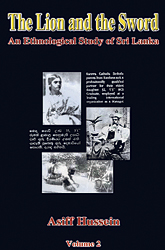Today, perhaps more than ever before, free and open discourse on matters relating to caste is regarded with caution mainly due to the sensitive nature of the topic. On the one hand, it is deemed divisive as discussion or debate on the topic among members of different caste groups can lead to ill-feeling, particularly when one group attempts to arrogate to itself claims of superiority to the exclusion of others. Such sentiment is considered detrimental to the formation of not only a broader national identity but also as inimical to the formation of Sinhalese and Tamil nationalist ideas.
At the same time one cannot doubt that caste sentiment also provides a sense of cohesiveness among members of a particular caste, giving it a sense of identity, belonging and community feeling akin to that of a family, clan or tribe.
This has led to a somewhat paradoxical situation in society, at one time being considered extremely impolite to be mentioned in the public domain and at another very much a matter for discussion in private conversation in hushed tones or in connection with matrimonial matters when it assumes sudden respectability.
It therefore needs no stretch of imagination to conclude that casteism is deeply rooted and firmly entrenched in local society. How far this situation will continue only time will tell, but for the present it is still very much a social reality.
`It is in such a context that Asiff Hussein’s work The Lion and the Sword which is the second of its series becomes particularly valuable. The work which is exclusively devoted to casteism as it exists in Sinhalese, Tamil and Muslim society should go a long way in enlightening readers on this little known topic.
The book contains detailed information on aspects such as ethnic origins, settlements, occupations and clan and family names of the different caste groups of the country each of which is dealt with separately.
The topics covered include The origin and evolution of caste, The evolution of caste in India, The four varnas, Sinhalese caste groups (comprising no less than 25 distinct groups), Caste in Tamil society, Caste structure in Sri Lankan Tamil society, Tamil caste groups (comprising of over 30 distinct groups) and the little known Muslim barber caste known as the Osta.
The book is available at Vijitha Yapa, Lake House Bookshop, Sarasavi Bookshop, Makeens, Barefoot and Serendib Bookshop. |

